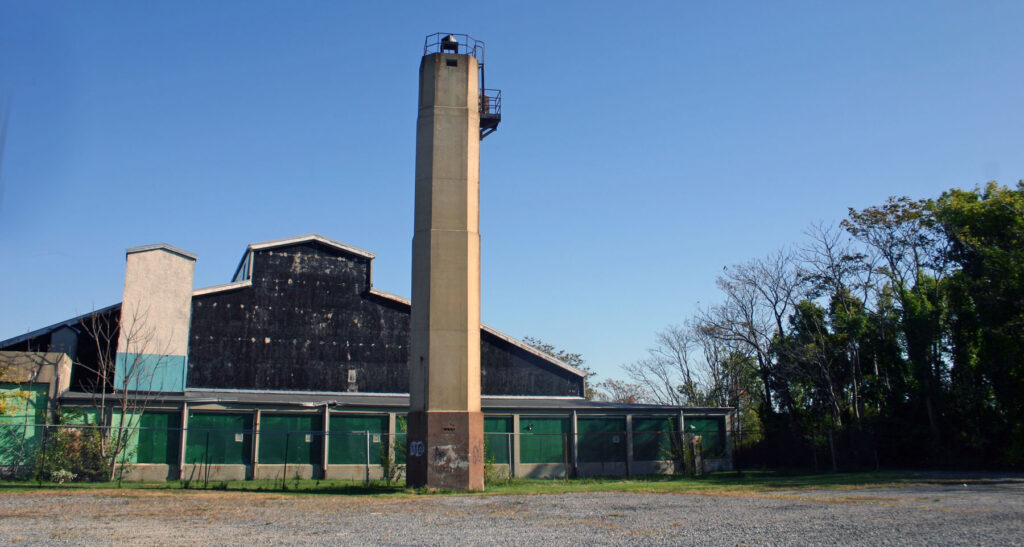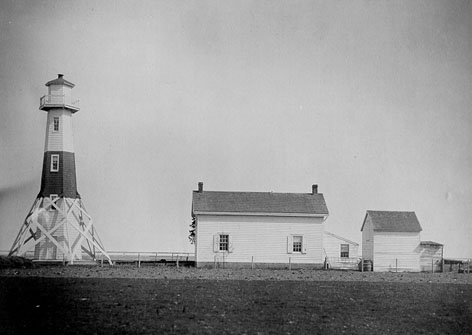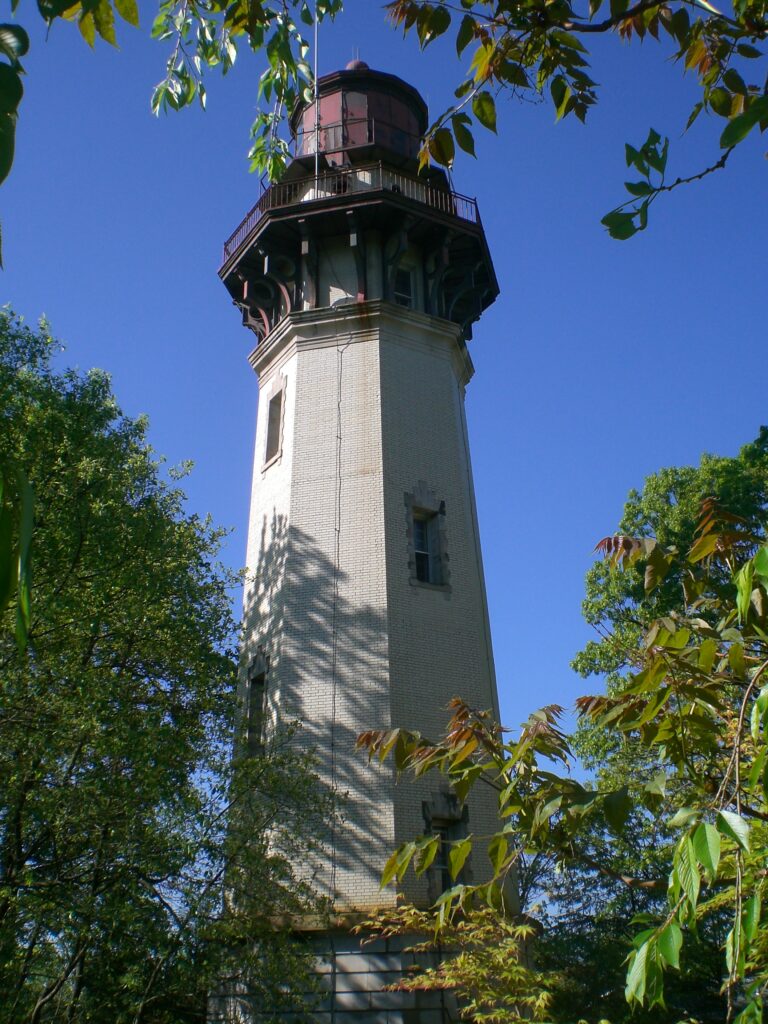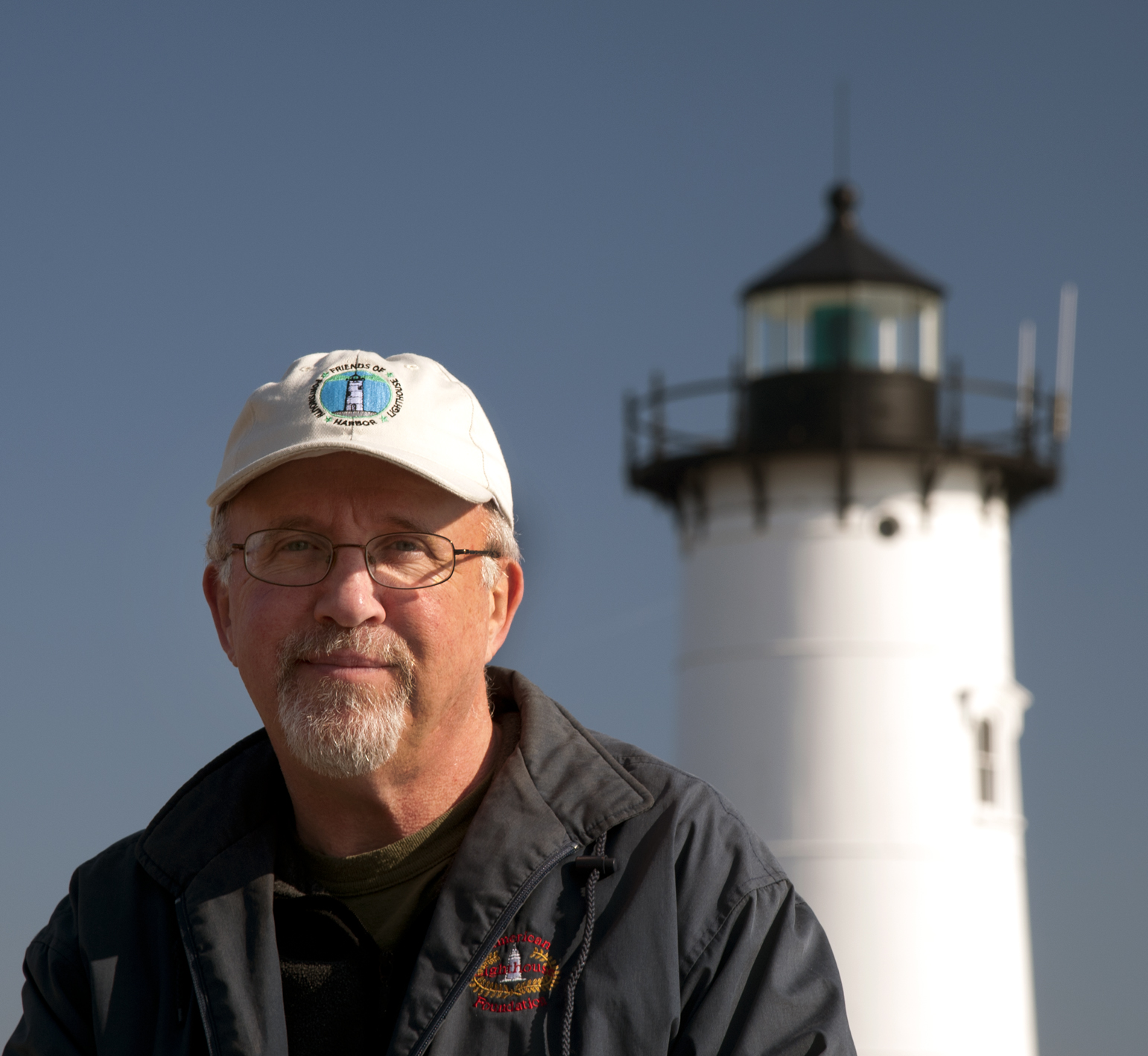
Captain Joshua Card here at Portsmouth Harbor Light Station, New Hampshire. Sometimes a lighthouse doesn’t look like a lighthouse, but it can still serve an important purpose. The Elm Tree Light in New York is one such structure.
The abandoned, nondescript concrete tower that now stands near an old airplane hangar at Miller Field on the east coast of Staten Island, New York, would never be mistaken for a traditional lighthouse, but for many years a vital aid to navigation was located there. Long before that, sailors used a prominent elm tree in the vicinity as a day beacon.
Three new sets of range lights were established in 1856 for the Main, Gedney, and Swash Channels to New York Harbor. The Elm Tree Light served as the front range light in the Swash Channel. The New Dorp Light, nearly two miles distant, served as the rear range light.

The Elm Tree Light was first exhibited on November 1, 1856. The lower part of the original hexagonal wooden tower was surrounded by a system of skeletal supports that flared out, making the tower look something like a rocket. The first keeper was William Hooper. After Hooper died in 1859, his wife, Sarah Ann Hooper, served as keeper until 1867.
Jacob C. Swain was the keeper from 1885 to 1906. Robert Bachand, in his book Northeast Lights, informs us that Swain, when he was in his late sixties, married a widow with two children. The couple had two more children, and Sarah Swain assisted her husband with his lightkeeping duties. Swain died in February 1906, leaving Sarah with four children, aged three to fourteen.
Sarah Swain applied for the keeper’s position, but she was turned down in favor of Edward Burge, who had been keeper at West Bank Light for several years. The president of Staten Island’s Borough of Richmond defended the widow, to no avail. “The Light House Establishment,” wrote the local superintendent, “must pay more attention to living keepers than to the relatives of dead ones.”
Burge remained keeper for about thirteen years. In a 1924 interview, he showed himself to be quite a philosopher. “I’m not sure what the fascination of lighthouse keeping is,” he said. “Maybe it is the freedom. . . . It may be the love of the sea. You know the sea fascinates a man, some men more than others. You are a little in awe of it always, and sometimes afraid of it, but you never can get away from it. After a man has been in the service for a time, nothing else ever satisfies. Those who quit usually drift back into it.”

For some years, the Elm Tree and New Dorp lights were looked after by a single keeper who also cared for Staten Island Lighthouse on Lighthouse Hill. John Carlsson retired in 1934 after a thirty-seven-year lighthouse career that included seventeen years of keeping the three lights. On the occasion of Carlsson’s retirement, a New York Times writer asked his wife, Anna, if she expected their life to change. She answered in the negative, adding, “He never went anywhere anyway.” In 1939, the extant sixty-five-foot-tall concrete tower replaced the original wooden tower.

Jeremy D’Entremont is the author of more than 20 books and hundreds of articles on lighthouses and maritime history. He is the president and historian for the American Lighthouse Foundation and founder of Friends of Portsmouth Harbor Lighthouses, and he has lectured and narrated cruises throughout the Northeast and in other regions. He is also the producer and host of the U.S. Lighthouse Society podcast, “Light Hearted.” He can be emailed at Jeremy@uslhs.org

